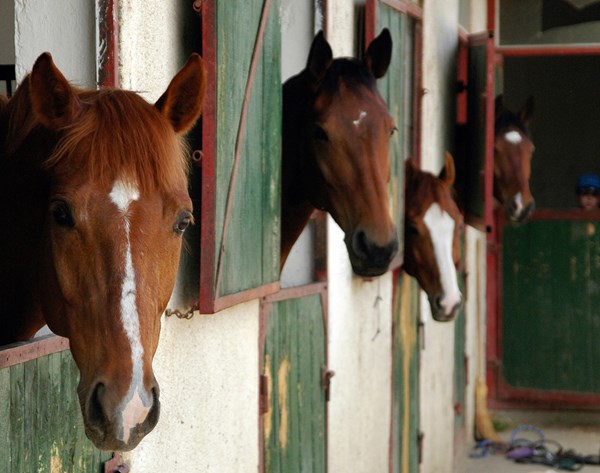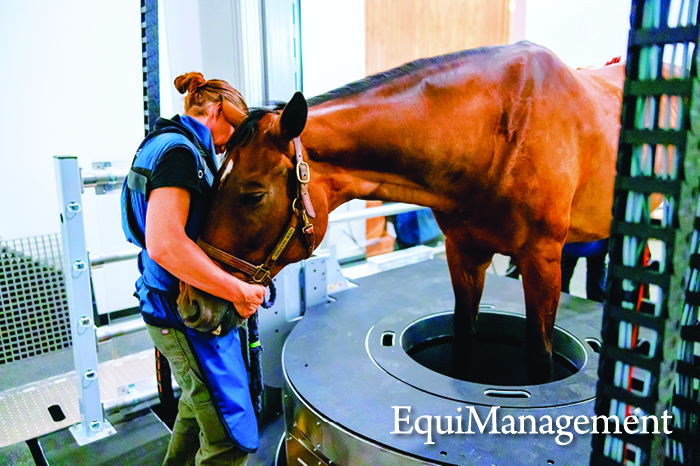 Credit: Thinkstock Which horse has glanders? According to the researchers’ experience, clinically normal but infected (i.e., IB positive) horses do not show classic clinical signs.
Credit: Thinkstock Which horse has glanders? According to the researchers’ experience, clinically normal but infected (i.e., IB positive) horses do not show classic clinical signs.Glanders, one of the oldest known zoonotic infectious diseases, is caused by the bacterium Burkholderia mallei. Infection with B. mallei may cause clinical signs in horses after an incubation time of three to five days or longer. The disease is widespread in several countries in South America, the Middle East, Asia and Africa. During the last five years, cases were reported from Afghanistan, Bahrain, Germany, Kuwait, Lebanon, Brazil, Mongolia, Myanmar, Eritrea, India, Iran, Pakistan and Russia. Notification to the World Organization for Animal Health (OIE) is compulsory for OIE member states. Impacted countries face rigorous restrictions in international trade of equids and their products for at least six months.
In 2014, after 60 years of disease freedom, Germany identified a glanders-positive horse. Glanders had been considered eradicated in Western Europe since the 1960s. This initiated an international discussion concerning adequate methods to confirm infection or disease.
A glanders case definition is not available from the OIE. Consequently, each country must implement its own regulations. For serological testing and confirmation of clinical suspicion, Germany relies on the OIE prescribed complement fixation test (CFT) in combination with the immunoblot technique. The CFT is prescribed for international trade by OIE. Unfortunately, the CFT result is influenced by many parameters, such as the bacterial strains used for antigen production—we use a certified CFT antigen (ccpro, Oberdorla, Germany); the complement and hemolytic systems (standardized components are advised to minimize intrinsic variation); and technical aspects, such as incubation time and temperature.
The highly specific immunoblot (IB) for glanders is used to exclude false positive CFT results. Validation data confirm that the IB test is only positive for infected animals. It must, however, be validated for different geographic regions. IB validation, following OIE recommendations, is an ongoing project not yet finalized at the glanders OIE reference laboratory in Germany. The 2014 case of glanders in Germany was identified by this test combination.
According to our experience, clinically normal but infected (i.e., IB positive) horses do not show classic clinical signs. Therefore, the detection of B. mallei in these horses is highly challenging. At necropsy, a thorough search for lesions especially in nasal cavity, skin, and internal organs is necessary, since they are often barely visible. All lesions and aberrant tissues must be sampled for further analysis. To investigate if a horse is infected with B. mallei, a combination of techniques is used. These include cultivation, polymerase chain reaction test (to detect B. mallei DNA), histology (to exclude other diseases), immunohistochemistry (IHC) to visualize B. mallei antigen in tissue sections, and experimental infection of guinea pigs. Finally, detection of B. mallei may still fail in a significant number of cases, because few bacteria are present in glanderous lesions. These laborious and time consuming procedures require up to seven weeks to complete before final results are available.
In Germany, serologically positive CFT results for glanders must be immediately verified by IB at least twice. Horses that test CFT positive but IB negative have to be re-tested three times at two- to three-week intervals; horses that remain negative are considered uninfected. Suspicious and outbreak populations must be re-tested at least three times in two- to three-week intervals with negative CFT results before restrictions on these populations can be lifted. Positive CFT results that have been confirmed by IB are considered as proof for B. mallei infection, even in the absence of clinical disease or detection of B. mallei. Additionally, isolation, molecular identification and/ or IHC identification of the agent in characteristic lesions constitute unambiguous proof of B. mallei infection.
This article was written by Drs. Many C. Elschner, Elisabeth Liebler-Tenorio, and Heinrich Neubauer of the Friedrich-Loeffler Institute in Germany. You may contact Elschner at mandy.elschner@fli.bund.de.
This article is from the Equine Disease Quarterly, published by the University of Kentucky College of Agriculture, Food and Environment Department of Veterinary Science and sponsored by Lloyd’s of London and its Kentucky agents. You may subscribe to this publication for free.

![[Aggregator] Downloaded image for imported item #18375](https://s3.amazonaws.com/wp-s3-equimanagement.com/wp-content/uploads/2025/09/30140031/EDCC-Unbranded-26-scaled-1-768x512.jpeg)


